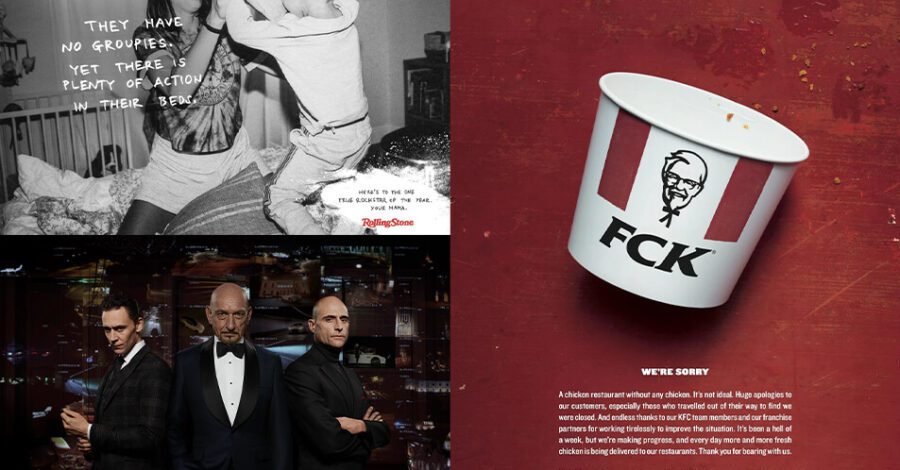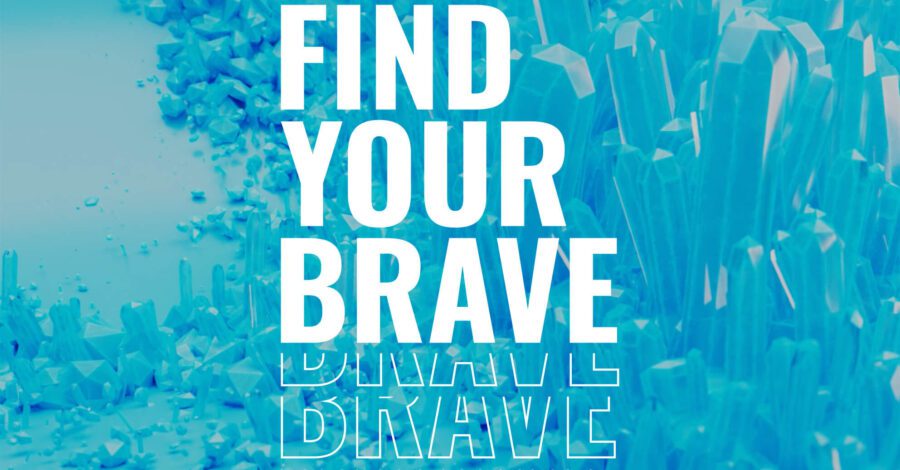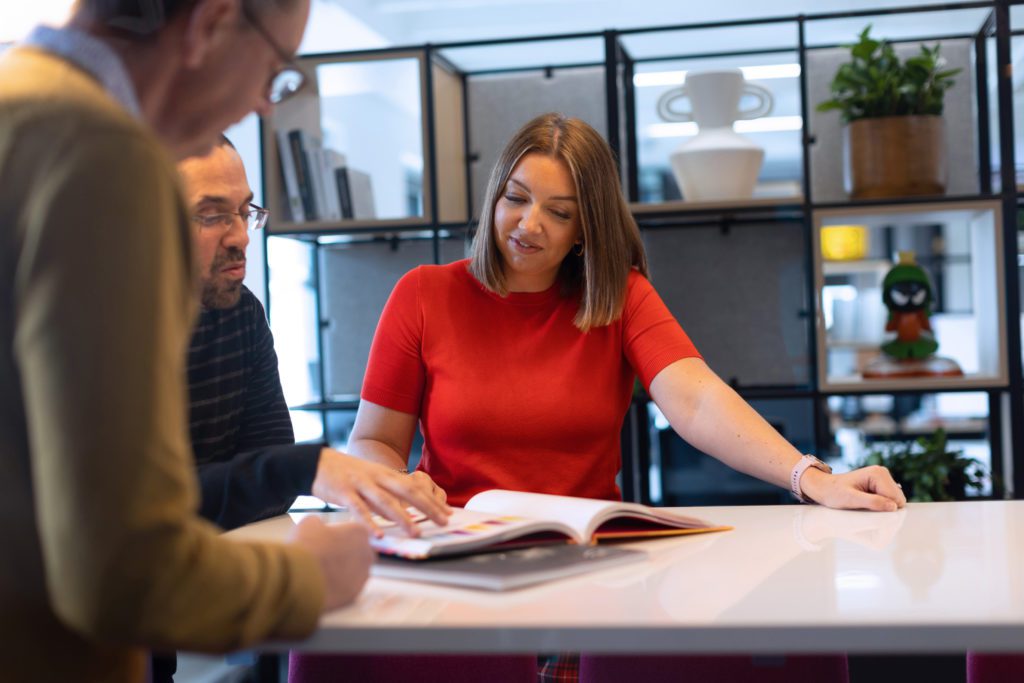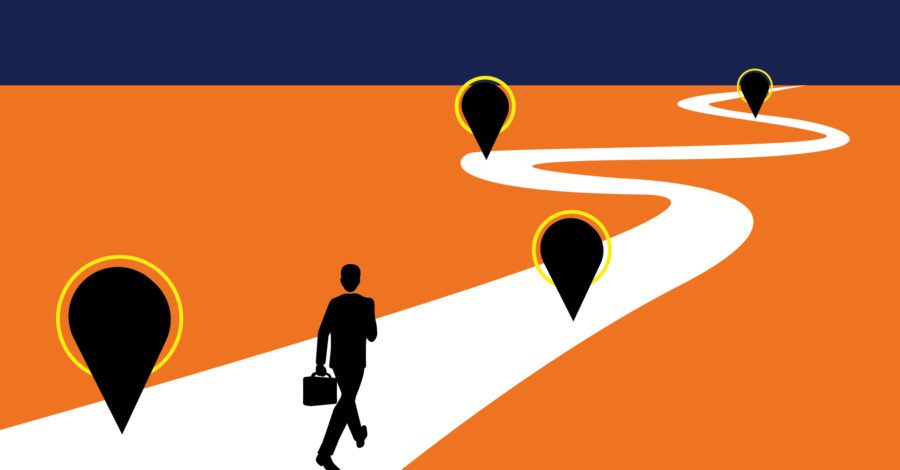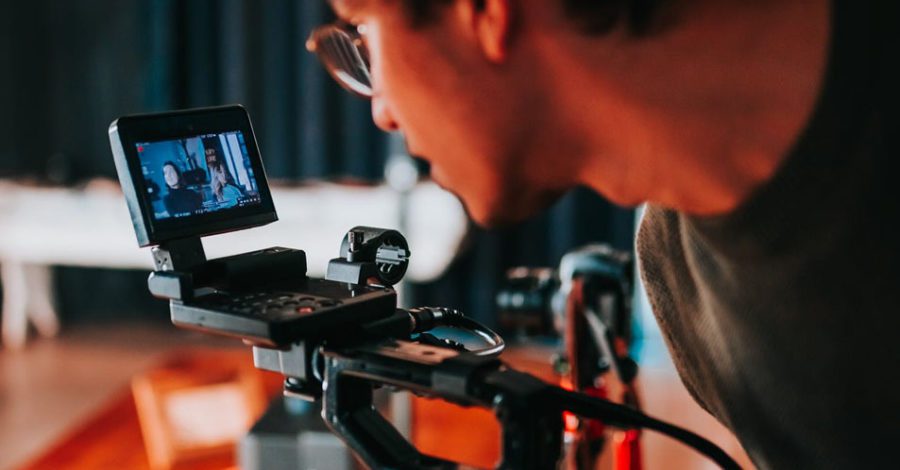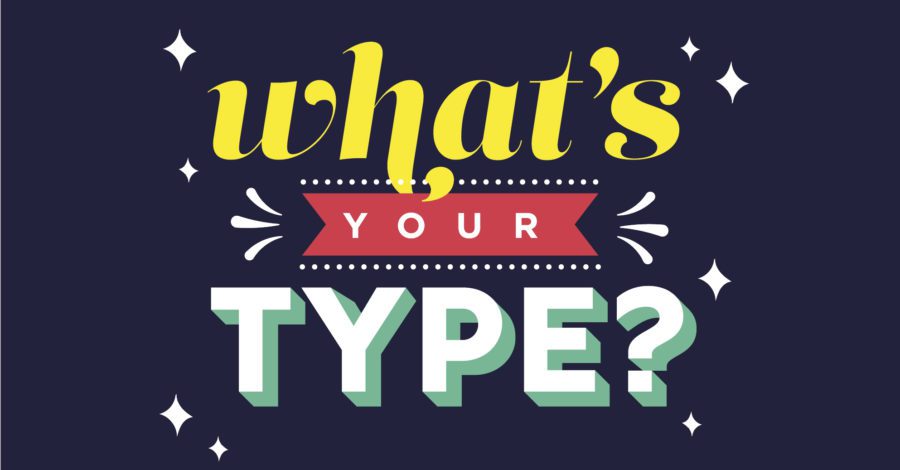The real powerhouse of lead generation
By now you should know that at Fluro, brand comes first. Get your brand right, and it will be your most powerful marketing tool, leading the way for all your campaigns and marketing activities.
If you haven’t got yourself a strong brand with distinctive assets, then you’ve got our number, right? But for now, let’s assume that you’ve got a great brand that’s working for your business. So, what comes next? Tell the world. Spread the word. Shout it from the rooftops.
Whether you call it brand awareness, brand building, or brand marketing this stage covers all the various campaigns and activities that tell the world about your brand. These days, there are more brand awareness opportunities than ever before; experiential marketing (think Carlsberg’s beer dispensing billboard) events live or virtual (think launches, keynote speeches, webinars, thought leadership), social media, PR and traditional media advertising campaigns.
The war on brand
The B2B Institute at LinkedIn, believe that there’s been a war on brand since the rise of digital marketing. The advent of tracking software and the lure of quantifiable metrics have led to an explosion in performance marketing. Being able to see actual hits, visits and clicks has become quite addictive. And let’s not forget that hard facts always impress the stakeholders. But the result of our insatiable desire for metrics, has meant that brand-building has lost its footing in many marketing budgets.
However, the B2B think tank also believes that by 2030, the tables will turn, and brand will once again reign supreme in the hearts, minds and budgets of marketing teams all over the world. They reference the game-changing research of Les Binet and Peter Field who suggest that all marketing falls into two basic categories;
- Sales Activation: performance-based tactics that work fast for short term growth
- Brand Activation: less measurable, but richer, strategic activities for long term growth
Binet and Field criticise marketing budgets that favour sales activation activities, typically called ‘lead generation’ or ‘demand generation’ in a B2B context. They believe that sales activation merely captures existing demand and brand building is the real powerhouse behind generating new demand.
The case for brand building campaigns
- Brand power builds customer loyalty and customer loyalty generates recurring revenue.
- Brand power adds value, giving a business the ability to raise prices and increase profitability amid inflation and competitive landscapes.
- Brand power can protect you against the shifting sands of category. “Categories are mortal; brands are immortal.”
- Brand power can’t be copied. Features and benefits can be copied, lead gen campaigns and tactics can be copied. But your brand is yours alone, and if someone tries to copy it, they’re breaking the law.
- Brand power attracts the best talent.

From B2B Institute; 2030 B2B Trends -Contrarian Ideas For The Next Decade
Get Creative
“Creativity is one of the most important variables in marketing success” says Jon Lombardo, of the B2B Institute. “Some would say it is the single most important variable and that strong creative can multiply the financial returns of a marketing campaign by 12X.”
And he’s not the only one who’s putting all his eggs in the creative basket. James Hurman of Previously Unavailable, has been touting the importance and extraordinary value of creativity in collaboration with WARC. WARC analysed 5,000 award-winning campaigns in their archives, from 2015 to 2022. They found that those which are highly awarded for creativity are more likely to be effective, supporting the idea that creativity supercharges the impact of marketing.
Bet Big
Getting noticed is the name of the game for marketers. And if you already have a brand that stands out, then doubling down to make a noise, is relatively easy.
But doubling down still requires a leap of faith, because it means having the guts to be different and to stand by your most distinctive qualities.
“If you’re not spending at least 50% of your budget on a single creative idea, you are not betting big enough” says the team at the B2B Institute. “When you are fortunate enough to find an idea that is contrarian and right, you need to bet big on it.”
Today, the marketing experts are recommending that budgets are split 50/50 between sales activation and brand building. If your strategy doesn’t look like this, then it’s time rethink your strategy.
Let's start something
Want to talk to us about a project?
Just get in touch, we'd love to chat.
Send an email to hello@fluroltd.com
Ring on 01628 525 449
DERBYSHIRE 2023
At some companies, team building days are based on activities that encourage cooperative problem solving, and foster trust. But at a creative agency, they tend to look a bit different, and they serve a different purpose.
Last year, our company trip involved the warmth of the Spanish sun in September, poolside drinking and dance parties, but this year was all about protective head gear, home-grown October drizzle, and perseverance.

Facing our fears
Under the guidance of the experts at Acclimbatize, we found ourselves paddling Derbyshire’s Cromford canal in canoes, abseiling down sheer cliff faces of millstone grit and squeezing through rocky crevices that no fully grown human was ever supposed to squeeze through. We threw axes at targets, shot rubber arrows at each other in some ‘friendly’ rounds of archery tag, and the last ones standing threw themselves into a game of Zorb football, literally.
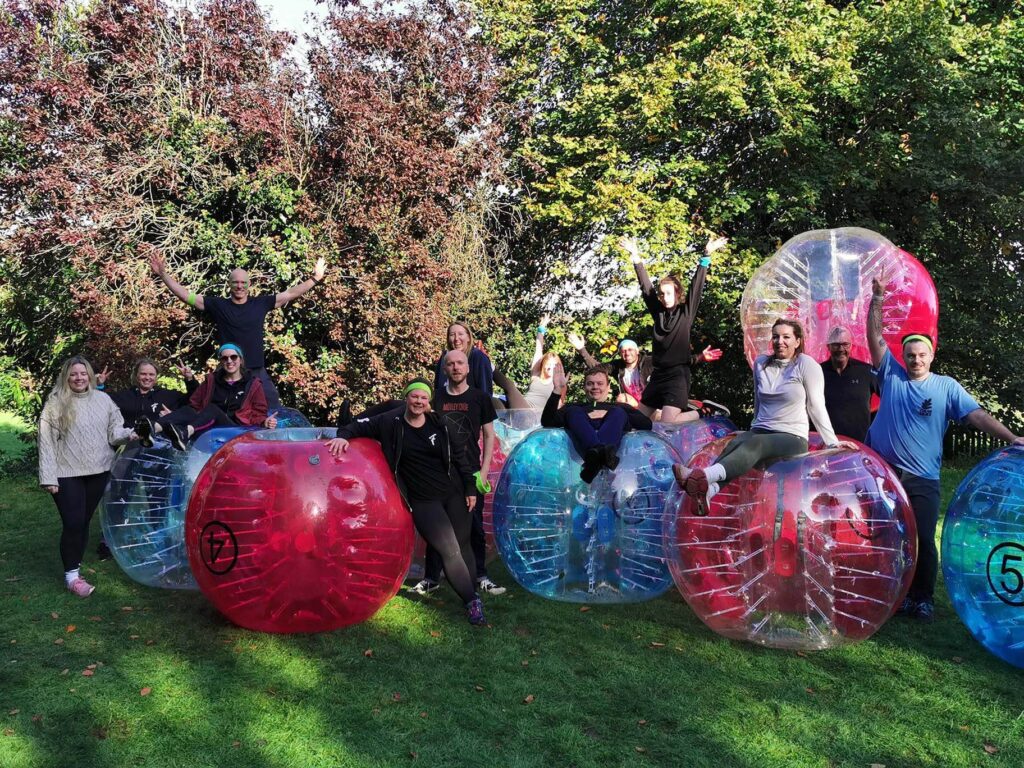
What happens in Derbyshire
Gathered in a beautifully restored 17th century Georgian mansion, team Fluro enjoyed three days of action and adventure, Halloween-themed hell-raising, and late-night hot-tub sessions. There was laughter and dancing and there was wine and feasting and we all came away with the shared wisdom that what happens in Derbyshire, stays in Derbyshire.
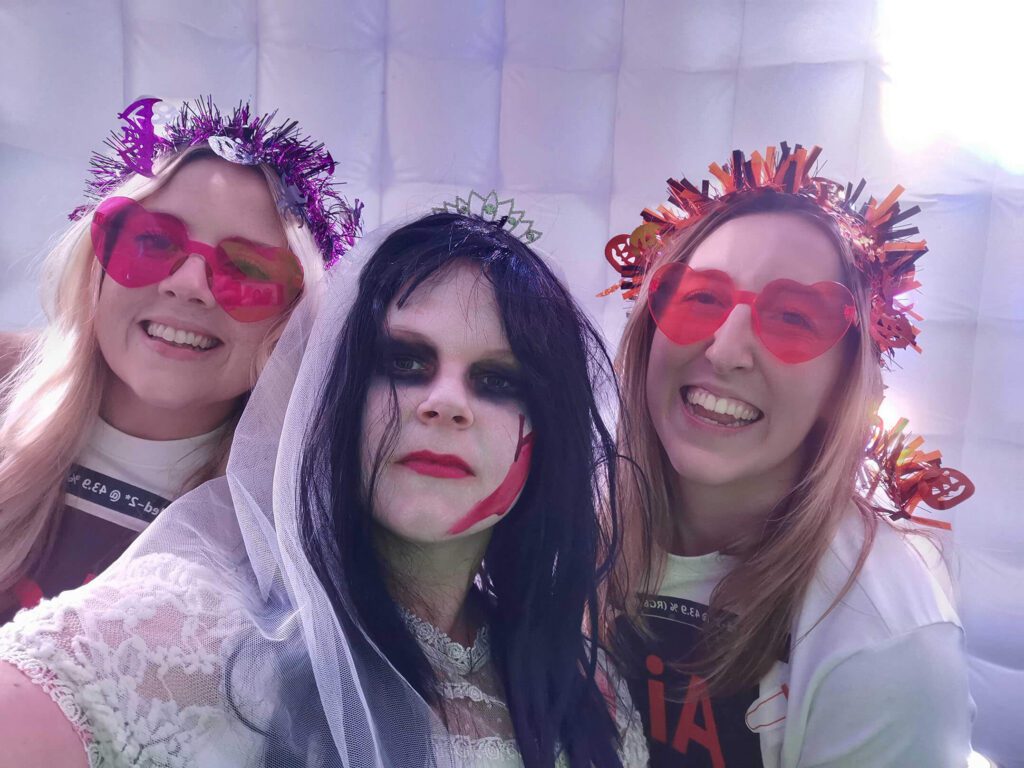
Creative Communion
For us, company trips aren’t a tick-box exercise to foster trust, cooperation and creative problem solving. Because those things happen every day at a creative branding agency. For us, these things aren’t a nice-to-have novelty that we strive for on company day, they’re qualities we rely on daily to keep our creativity primed and to deliver the standard of work we’re so proud of.
Fluro company trips are more about celebrating the bond that we share in our pursuit of creative excellence.
They’re about coming together to play and to keep our imaginations blazing.
They’re the stuff of legend.
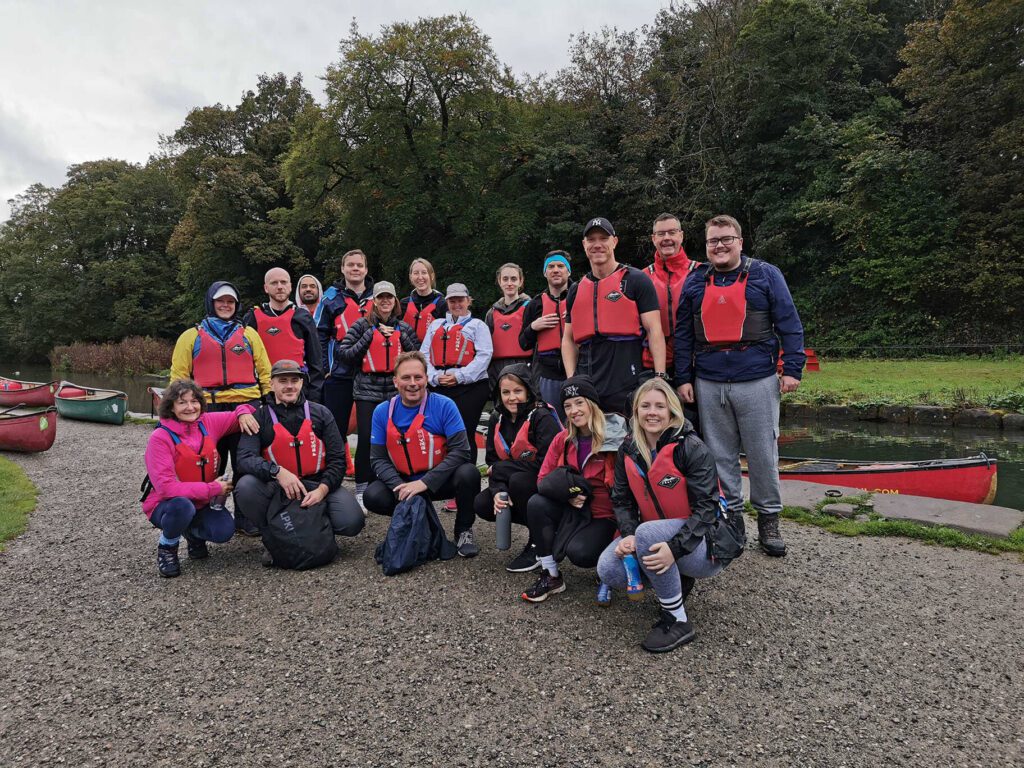
Let's start something
Want to talk to us about a project?
Just get in touch, we'd love to chat.
Send an email to hello@fluroltd.com
Ring on 01628 525 449
CAREER ADVICE FOR NEW DESIGNERS
As a designer at the start of your career, you have no choice but to look ahead and face your future with your head up and your feet on the ground. But as you add up the years and build on experience, you have the advantage of being able to look back and reflect. As a creative agency, we’re very age diverse and it’s a wasted opportunity not to ask our team to share their wisdom. So, we asked them what career advice they’d give to their younger selves, thinking on what they’ve learned and what they’d do differently.
Never stop asking why
When something looks good, ask yourself why it does. And keep asking that question until it becomes second nature. Evaluation skills are invaluable and will serve you well for the rest of your career.
Practice makes perfect
Do practice briefs. Try using https://www.briefbox.me/ . They’ve got lots of interesting briefs, quick challenges and courses for new starters. Which will not only help you get better, but it also helps develop the discipline to ‘show up’ for work that you might not find exciting or would choose yourself – which is what agency work is all about.
Curation is key
It’s tempting to show a potential employer everything you’ve ever done. But remember, they’re busy and they’ve got to look at loads of portfolios. By only showing your very best, most relevant work, you’re saving them time and showing you can self-edit. And getting off to a great start.
Get competitive
It’s hard to build a portfolio when you’ve never had a commission or a job. Entering competitions is a really great way to build a body of work. You get a prompt; a deadline and you know the standards will be high. It doesn’t matter if you win, what matters is that you’ve challenged yourself and have some work to show for it. In the very least you get to see what other people are doing and can use the opportunity to benchmark your work and maybe even steal a few cool ideas.
Always be learning
Maintaining a learner’s mindset, no matter what stage you’re at, is always sage advice. You’ll never know everything and you can always get better. So, remember that when something goes wrong, or someone doesn’t like your work. You’re always learning. But so are they. Let’s all be humble together.
Be interested
Find outlets that let you test and refine your skills. Whether it’s a project with friends or getting involved in other creative circles. When you’re personally invested in something, you enjoy a certain amount of freedom to create and you’ll be driven to work harder.
Be adaptable
Never close yourself off to new things. Processes, software and culture changes all the time, and you need to stay adaptable to stay relevant. The very nature of creative industries is using novelty to sell.
Learn the Typography basics
Sometimes a great design can be let down by simple typographic errors. Don’t become a statistic.
See it to believe it
Seeing your work in print as well as digital can help you understand the practical provenance of design conventions and the requirements and limitations of physical materials.
If you’re starting out your career in design and you’d like to start it with us, get in touch on careers@fluroltd.com
Let's start something
Want to talk to us about a project?
Just get in touch, we'd love to chat.
Send an email to hello@fluroltd.com
Ring on 01628 525 449
FIND YOUR BRAVE
DISCOVER WHY BEING DIFFERENT IS MORE IMPORTANT THAN BEING BETTER WHEN IT COMES TO YOUR BRAND.
You’ve heard people talk about it. Branding experts write books about it. Business empires are built upon this single foundation; be different.
Seth Godin once said, “the sound of a small bell during a dark night is louder than the din of traffic outside your window during rush hour. Surprise and differentiation have far more impact than noise does.”
Think about it for a moment. If your unique selling point (USP) is about outperforming or undercutting the competition, chances are you won’t be able to rely on that as a competitive advantage forever. Someone else can come along at any moment and do it better than you or cheaper than you.
So, what’s the one thing they can’t compete with or do better at?
Being you; your perspective, your technique and your experience and all those intangible qualities that make your business different. And when your brand is different, you will stand out.
DIFFERENT IS BETTER
Take Apple, their agenda was not about being better than the competition. Apple was all about being different and their mission to be different informed their entire brand identity and marketing approach, changing the centre of gravity for the sector and the consumer.
Okay, so if different is good, how can you make this work for your business? It’s tempting to fall back on features and benefits when it comes to differentiating your offer, but the competition always catches up. So, let’s look beyond USPs. Instead of trying to be a better version of the competition, we’ll help you become the best version of yourself. Because after all, you’re the only one who can do it the way you can. Your unique qualities and driving purpose have meaning and value far beyond mere features and benefits.
But how do you communicate all of this personality, all the layers and complexities that form your unique character? The simple answer is branding. Branding is the key to true and lasting market differentiation. A strong, distinctive brand will give you a competitive advantage that – unlike features or benefits – can’t be copied or bettered. And unlike features and benefits, we believe that the story you tell about your brand has unlimited potential. In fact, your brand story will only become more potent over time.
WHEN IT’S HARD TO BE DIFFERENT
There are plenty of situations where it’s hard to be different. Sometimes it’s because you’re new, and you’ve got nothing to leverage. Sometimes it’s because you’re familiar and you are challenging expectations. And then there are those times when the intangibility of your offer makes it feel like you’re chasing a phantom.
– When you’re brand new
Building a memorable brand can be difficult for any new product or business. After all, how will anyone ever find you if they don’t know you exist? But that’s where marketing experts can step in and lend a hand.
The business of getting your business ‘out there’ is called Brand Awareness, and it’s a core principle in advertising. It involves first creating a memorable brand identity through design, tone of voice and customer experience and making sure your brand gets noticed and remembered through a combination of inbound and outbound marketing strategies.
– When you’re lost for words
When your offer is something new, whether it’s a product, service or business model, it makes talking about your offer a real challenge because you can’t leverage an existing ‘language’. We’ve had clients present us with an offer that doesn’t easily slot into any existing sector categories or terminology. This can make it difficult to communicate your message to the world, especially in an online context where search engine optimisation and pay-per-click (PPC) rely on keywords to communicate your offer effectively.
Coining a phrase or term for your new offer poses a problem when it comes to digital marketing and communication, because if no one is using that term, keyword or phrase in their search, then how will they find you?
– When your offer is intangible and iterative
For many start-ups there is often no physical product or service to offer, especially in the early stages of development where the ‘product’ is intellectual property. Defining immaterial goods and services makes brand identity challenging because there’s fewer opportunities to use packaging and signposting to communicate your look, feel and tone of voice.
Plus, it’s tough to define a brand when the goal posts keep changing. The nature of a start-up business often means that the brand will undergo several transformations before it gets to market. This makes it hard to know when it’s the right time to commit to a brand identity. For many start-ups, creating a strong brand identity between rounds B and C can have more impact than waiting till after the final round. Even though the parameters might change again, being armed with a strong brand identity during the funding process can project confidence and present a more concrete vision.
– When your brand is established
Loss of brand equity is usually the biggest barrier a business will have when it comes to rebranding. And we get it. A drastic change in branding has the potential to alienate existing loyal customers who have strong associations with the old brand.
That why with careful research, planning and clearly defined objectives we can protect the major brand elements to preserve recognition.
Communication is key for any successful rebrand, having an official launch and sharing the reasons behind the rebrand goes a long way towards mitigating any potential loss of brand equity. A continuous effort to monitor the impact of the rebrand will mean that we’ll be ready to adapt strategies based on feedback and market responses.
FORTUNE FAVOURS THE BRAVE
“Who Dares Wins” isn’t just a Channel 4 reality series or a John Wick tattoo and as a sentiment, it goes much further back than the British SAS. The earliest record of “Fortune Favours the Brave” or something like it, has been attributed to Roman writers in the centuries before Christ and it remains potent to this day.
Why does this phrase still have so much power?
Because it’s not easy being brave. If it was, everyone would be. Only those who overcome their fear of failure, their fear of change and challenge will win the ultimate prize of success and good fortune.
Sounds intense, doesn’t it? But in reality, being brave doesn’t start with confidence. Being brave starts with determination and courage can be learned and developed. It’s not about leaping blindly into the unknown, it’s about being observant, learning how to evaluate risk and recognise opportunity when it comes knocking.
HOW TO FIND YOUR BRAVE
We don’t expect everyone to be comfortable with our approach at first and it’s important to know that we don’t equate being brave with being foolhardy. For us, being brave is about self-awareness, understanding and great timing. To help you understand our approach, we’ve put together a list of Five Ways to Find Your Brave;
A balanced perspective
Fear can be useful. If we acknowledge our fears, we’re one step closer to overcoming them.
Identify your strengths
When you’re confident in your abilities, you’re much more willing to go all-in when an opportunity presents itself.
No risk, no reward
What’s the worst thing that could happen if you take a risk? Now compare that scenario to what will happen if you do nothing at all?
The Comfort Zone
Build your courage muscles by pushing yourself outside of your comfort zone slowly and more often. Get comfortable with feeling uncomfortable. Make peace with uncertainty.
Failure=winning
When you take a risk, you never really lose because you either succeed or you learn from your mistakes.
Being guided through the process by someone who’s done it before and has the skill to uncover and define what makes you special will make all the difference to your journey. Having a like-minded creative partner will help you build and market a brave brand. A brand so different and so strong that it will the only reason your customer chooses you.
Let's start something
Want to talk to us about a project?
Just get in touch, we'd love to chat.
Send an email to hello@fluroltd.com
Ring on 01628 525 449
MOVING UP IN THE WORLD
In the last few years, our creative branding agency has grown to 20, and we’re still counting. In 2022, just as our cosy HQ in Bourne End had become a little cramped, the wheel of fortune spun in our favour. We heard the news that a larger space just upstairs had become available, and we knew it was time.
A New Space
As the crisp, winter sun streams through the new open-plan studio, we can’t believe how much has changed. It’s been an exciting time for our Creative Director Mat Harris. “We’d never done it this way, we’d just always done it adhoc. It was the first time we had the opportunity to step back and look at what we really needed and build something from the ground up that did exactly what we wanted it to do.”
As a business we needed more space, but we also needed our space to work in a different way. The new studio would need to accommodate more people, more meetings, private spaces for making phone calls, Zoom calls and collaboration spaces.
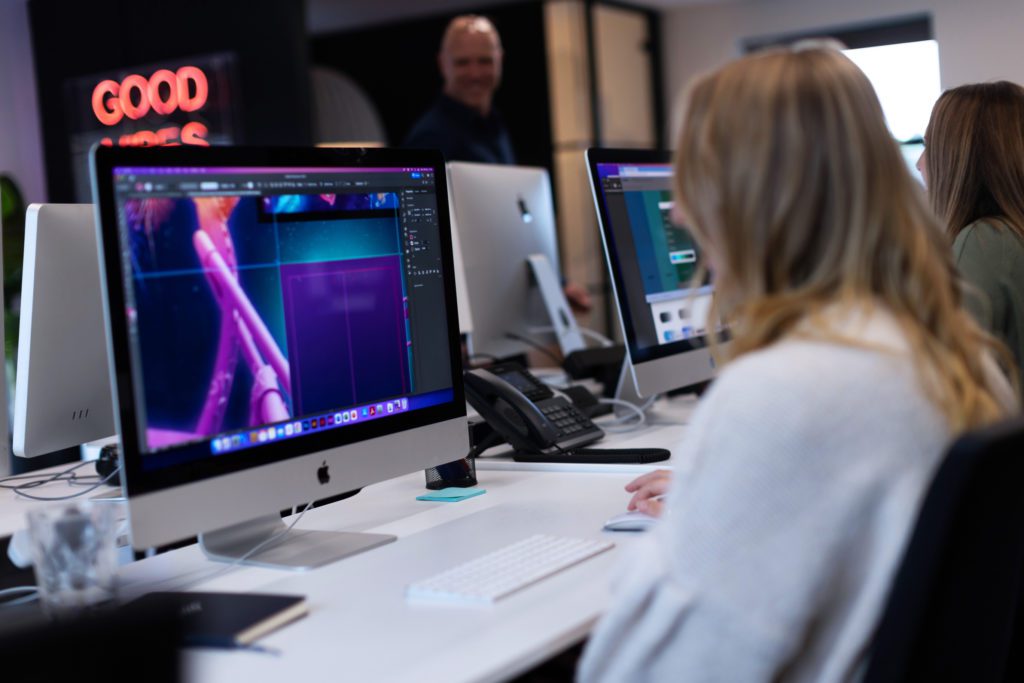
Asking the Experts
Of course, with a studio full of designers, we couldn’t help but have a go at designing the studio ourselves. But it didn’t take too long before we realised the space was too big and too important. Sometimes you just have to accept your own limits.
So we called in the expert eye of Heather Lehmann, Founder and Director of Crux Design Consultancy and Helen and Anthony of Shellwin Real Estate. We worked together to figure out why the old space evolved the way it had. And from there, we could figure out what we needed for this new space.
Style and Substance
The new space is open, bright and uncomplicated. But, as with everything, achieving simplicity is never simple. There were some serious hurdles to jump in order to realise this seamless aesthetic. The exposed beams in the ceiling were by far the biggest challenge to overcome. The construction team painstakingly customised and installed the insulation panels by hand. Sound-absorbing light fittings were placed in key areas of the studios to counter the impact of a large space on the acoustics.
But aesthetics were only half the battle, bringing the new studio up to scratch in terms of operational efficiencies was a critical element of the upgrade. Helen Shellabear developer and owner of Egham’s Court said that “by 2030, all commercial space will need a rating of A or B in order to be lettable.”
Factors such as insulation, heating systems and lighting all impact the operational energy efficiency of a building. Generally, the older a building is, the worse the rating. So, we were really pleased to receive an A rating, because in a retrofit, it’s almost unheard of.
Team Work
“I feel like we won this battle” says Mat with a smile, “with the help of Helen and Heather we’ve created a space where people want to be. The team have a space, plenty of space. And our studio is now a place where we can be comfortable, feel inspired and be proud to invite our clients to.”
Everyone is enjoying the bigger, brighter new Fluro HQ. From the cosy break out booths to the spacious new kitchen and lunch area, we’ve got the balance just right. And while we all really love the workspace of the studio, it’s the new conference room that’s become a firm favourite. But that could have something to do with the pool table.
If you’re curious to come and see our new studio, we’d love to show you around.
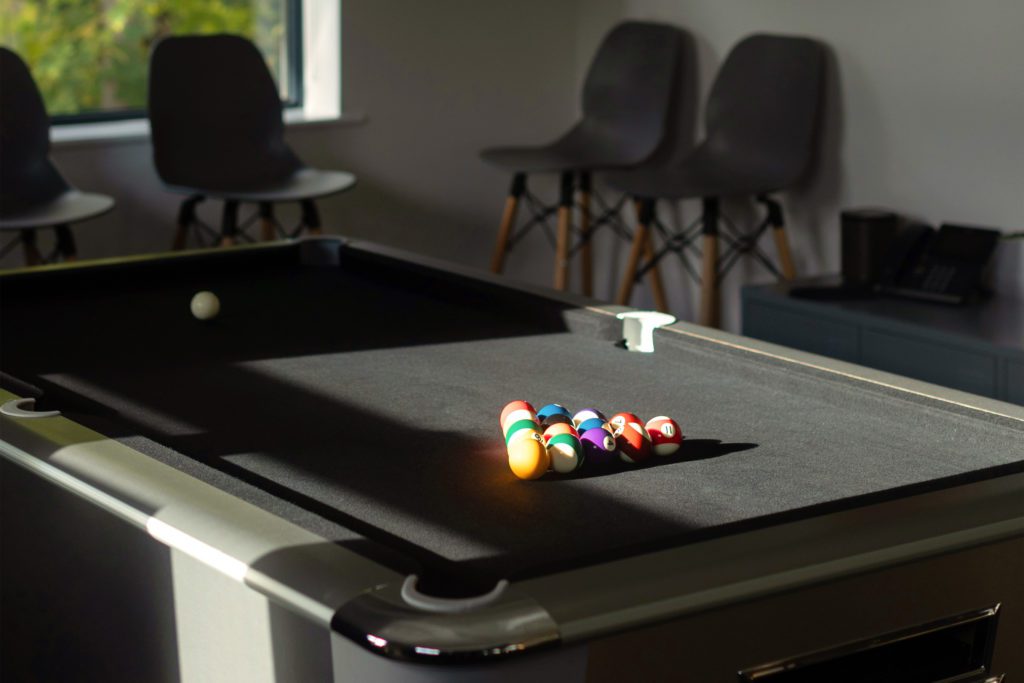
Let's start something
Want to talk to us about a project?
Just get in touch, we'd love to chat.
Send an email to hello@fluroltd.com
Ring on 01628 525 449
We’re the Firestarters
“So how can organizations win the talent war? By cultivating a workplace culture that engages, rewards and, most of all, inspires.” Forbes
According to Forbes, 2022 is the year of Workplace Culture. In the face of The Great Resignation and talent wars, most businesses have had to rethink the way they do things. In short, they’ve had to start putting their people first.
Putting people first
It might seem like a strange concept to some of the old guard, but at Fluro, putting people first is an absolute no-brainer. People have always been at the heart of every conversation and every decision when it comes to running the business. To us it seems obvious that if your employees aren’t happy then they probably won’t give you their best and maybe it’s because we’re a small business, or maybe it’s the nature of our work, but we need everyone to bring their A game every day. For us, getting the best from our team has always been about fostering creativity, building relationships, and giving our people everything they need to thrive, not just at work but as individuals. We also think that the best place for that to happen is here, in the studio.

Swimming upstream
In a climate where hybrid workplaces are the default setting, it feels like we’re swimming upstream, because – at the risk of sounding unpopular – we want our people in the room. We know that means putting your good jeans on and leaving the house, but we also know that the effort pays off. Salmon don’t swim upstream for the exercise, they do it so their young have a better chance not just to survive but to thrive. And that’s pretty much how we see things. In fact, we think it’s one of the main contributors to our success.
It’s not that we don’t get it, because we do. We’ve read the same articles that you have, saying that over 80% of professionals don’t want to return to the 9-5 framework and there’s no doubt that in some sectors, things desperately needed to change. Maybe some businesses in our sector needed to change too. But for us, flexibility has always been on the agenda, most of us have families and we whole-heartedly endorse the benefits of a balanced lifestyle. And who doesn’t love working in trackies and walking the dog on lunch break?
Feeling the glow
But on the flip side, an agency like Fluro, is at its very core a creative and collaborative place. And in our collective experience, we’ve found that creativity often flounders in isolation. There’s a spark that ignites, a feeling that comes alive when you’re all in the same room, and that’s why we like to do our thing together, in the shared space of the studio.
We’ve taken on a lot of new people in the past year, a mix of seasoned pros and emerging talents, and there’s nothing quite like the shared, dynamic experience of studio life. “I love that buzz you get when an idea lands on the table and everyone knows it’s in the bag” says Jackie our Creative Lead. “Of course, we can do it on Zoom, we had to for two years, but I want work to be more than just learning to overcome, or doing your due diligence, I want it to be affirming and inspiring.”
There’s a certain kind of alchemy, an infectious enthusiasm that builds in the room when raw reactions collide with a hunger to excite and amaze. You might have forgotten what that feels like, but we haven’t, and we want more.
Let's start something
Want to talk to us about a project?
Just get in touch, we'd love to chat.
Send an email to hello@fluroltd.com
Ring on 01628 525 449
Strategic Thinking
Strategy at a Creative Agency
Whether it’s design, copywriting or brand strategy, the work we do at a creative agency happens in the liminal space between an objective and its end. At Fluro, we use our creative skills to influence the way an objective reaches its end. To use a real-world example, if a carton of milk is the object, and the consumer is the end, then an advertising campaign is the means to connect the consumer with the milk.
Our copywriter attended Uri Baruchin’s short course at D&AD about strategic thinking. This is a big topic, and there’s a lot of wisdom out there about how to ‘do strategy’. And while we don’t want to ruin the surprise, we thought it was safe to share the bigger lessons we learned from Uri’s Think, Plan, Act workshop.
We are all strategists
While you might not consider yourself a strategist, you are a strategic thinker. Apparently, we all are.
Uri used a 1995 research paper about public toilet stalls to demonstrate the role that strategy plays in the selection process. In the Psychological Science journal, Nicholas Christenfeld conducted a study on which public toilet stalls are most commonly chosen. He used this data to illustrate the way we use strategic reasoning on a daily basis.
And when it comes to developing a creative strategy, developers, designers and writers are all part of the strategic picture and we all contribute in our different ways.
As well as being an interesting way to break the ice, Uri’s example helped us understand the dangers of choosing “the middle stall” when it comes to strategic brainstorming.

Strategies that stand out
It’s very easy in a studio environment to get into a creative groove, where the same people keep doing the same things in the same ways. If you keep doing – strategy or creative – the same way every time, you will keep getting the same results. We’re all guilty of this, because in the end, it’s hard to not be you right? And as much as we fall into this trap as individuals, it’s also happens in group work and in society at large.
A group task challenged the learners to come up with a strategy for a gin campaign. We were broken up into groups to come up with a strategy for our chosen tipple. When we all came back into the room to share our ideas, it was shocking to see how similar our strategies were.
This simple task made it obvious that there’s no benefit to staying in your own creative lane. On the contrary, it pays to open the discussion and always cast the net wider to explore those less popular, less obvious perspectives.
Whether it’s a small group in an agency, a community, or a society – we often tend to think along similar pathways – and the result is that we all come to similar conclusions. Needless to say that it pays to take the path less travelled, unless you want to end up in the same place as everyone else.

Managing strategic and creative processes
The final lesson from Uri’s workshop was that strategy is messy work. There’s a lot of ideas and opinions flying about and it’s not always easy to distinguish the great ideas from the good ones. As much as there are some really useful guides and templates, workshops and mind maps available, there is no magic formula to making hard decisions. Being a good decision maker comes down to experience and judgement.
While Uri didn’t have the secret to making good decisions, he did provide a handy set of tools to help us guide ourselves through the hard parts; the messy processes between research, concept and execution.
After all, the act of creating is really just a series of decisions. A writer wrestles with decisions about words, narrative and motivation. Designers have decisions to make about colour, spacing, typography etc.
Perhaps the most powerful lesson of all was realising that not only are we all strategic thinkers, but we’re also all creative thinkers. And we will always do better when we work together.
Let's start something
Want to talk to us about a project?
Just get in touch, we'd love to chat.
Send an email to hello@fluroltd.com
Ring on 01628 525 449
A Little Book of Big Values
A Little Book of Big Values
In September this year, Fluro held its first ever company day. It was the perfect time to share the news that in spite of the disruption caused by the pandemic, we’ve gone from strength to strength. But there was another, more important piece of news to share: the birth of our company values. Whether it was the scattering effects of the pandemic or our rapid expansion, we needed to consolidate our vision and our strategy. We also needed some new tools to help steer a larger team.
A small, black book with gold lettering and beautiful illustrations, Fluro’s Little Book of Big Values represents an important milestone – the moment we formally defined the ‘why’ behind our brand.
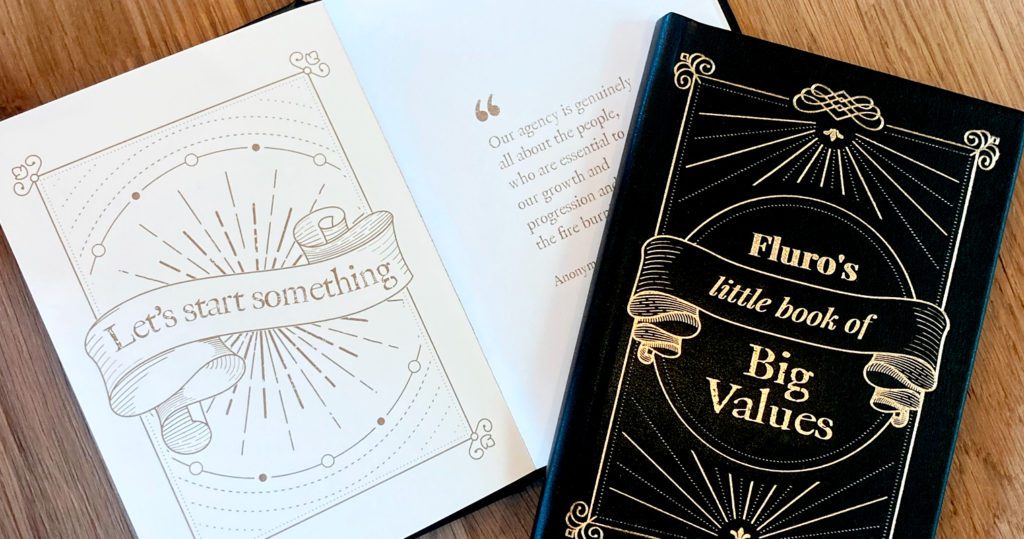
Why Are Company Values Important?
Establishing a set of values is tantamount to staking your claim in the world. They also help give your staff a reason for coming into work each day.
Austrian psychologist Viktor Frankl was the first theorise that the search for meaning is the most powerful motivating force in humans. Unlike his Nietzsche and Freud, Frankl felt that our need to create meaning was a stronger urge than the desire for power or pleasure.
A pay cheque is important, let’s not pretend it isn’t. But money isn’t the reason people like coming to work each day. Whether it’s swiping groceries or saving lives, each and every one of us needs to feel like our work is meaningful. Authors of The Why of Work, Dave and Wendy Ulrich, told the Harvard Business Review that “neither position nor salary seem to have much to do with finding meaning in work.”
Create a Sense of Belonging
Having a set of beliefs or values imparts meaning to the tasks and goals of working life. They also provides the framework to stimulate a sense of belonging. In her Forbes article, Tracy Brower used the psychological fall-out of the pandemic to highlight the importance of belonging. According to the author humans are hardwired for connection. The pandemic wreaked such havoc with our mental health because it took this vital factor away from us.
Belonging to a group is intrinsic to social identity. Belonging is achieved when you share a set of beliefs, because it results in a feeling of unity. But Jeanine Stewart, senior consultant to the Neuroleadership Institute says that being surrounded by people doesn’t guarantee a sense of belonging. To help your employees feel part of your team, you have to let them know what those shared beliefs are. But in order to share a set of beliefs or values, you have to identify them first.
Research shows that a strong sense of belonging can be a more powerful motivator than money. When people feel connected to their colleagues, the incentive to perform is higher. They’re driven more by their desire to maintain status in the group than by their pay check.
The Why Behind your Brand
Company values can also benefit your bottom line. In a previous post we explain how values help to harness the power of WHY . Author and TED speaker Simon Sinek believes that ‘people don’t buy what you do, they buy why you do it.’ If you don’t know why you are in business, how will your customers be able to?
Performance management platform Plai claims that customers choose companies whose values they can relate to. “Study after study shows that companies with strong values have better financial performance, customer and employee satisfaction, and grow faster.”
Let's start something
Want to talk to us about a project?
Just get in touch, we'd love to chat.
Send an email to hello@fluroltd.com
Ring on 01628 525 449
How to Find The Right Creative Agency
Finding the right creative agency for your business can be daunting. Do you need an agency with sector experience, or is most important to find a brand agency ‘near me’ or perhaps you want shake things up and select a creative agency that is going to give you something really different?
To help you find the right agency, we’ve put together a few pointers which should help you get your search underway.
Where to start?
- Have you seen a website or a campaign you like? Find out who’s behind it.
- Google may not have all the answers, but you might be surprised to find a sh*t hot agency right on your doorstep.
- Ask around for a recommendation. Word of mouth can be a powerful thing – a lot of our own clients have found us through recommendations.
What is your long-term goal?
Are you looking for a one-off project, or do you need a brand agency who can take things further for things like future campaigns, a website launch, video and ongoing support?
It pays to think long-term because once you find a great agency you get along with and they ‘get you’, the process becomes effortless and less stressful for you. As the relationship progresses, we get to know our clients inside out which helps us become your perfect partner. A lot of our clients stay with us for that reason. One good example is Edgify – we’ve done work for them ranging from a rebrand, animations and websites and our relationship is still going strong.
It’s all about chemistry
You want to work with people you like and get along with, that’s just how life is. In person meetings are a much stronger gauge of a good fit, and we always prefer to meet a client in person before we work together, but we also understand that sometimes that’s just not possible. The important thing is that both sides get a feel for each other and share a vision of the bigger picture. The perfect agency is out there for everyone and when you know, you know.
Assess the pitching process
Once you have whittled it down to a select group, you might decide that conducting a pitching process is the way forward. This will give you some insight into how an agency works and if you’re on the same wavelength.
Having a good brief is key here. This is the make or break of any pitch, so try and give as much background information as possible and pinpoint what the goal of the project or campaign is. Otherwise, you’ll just get a stab in the dark and you may not get the results you were hoping for.
Don’t break the budget
This is a big factor. Your budget needs to align with your ambitions and the size of agency you’re approaching. This is an extreme example but a freelancer rate is very different to an agency rate. On the other hand, a freelancer will have a very different and much narrower offering compared to a full-service agency.
Geography also plays a factor in how much value for money you get. London brand agencies tend to be more expensive so your budget will go much further elsewhere. And this might well be the point at which you drop us a line
Having a great agency in your corner is worth every penny and one of our client reviews is testament to that: “I highly recommend Fluro as an agency for their creative skills and approach to partnering. I’ve found them to be highly flexible, adaptable and very easy to work with.” David Bowman at Content+Cloud
Why not give us a try? We’re super friendly, and always happy to have a chat – so drop us a line or give us a call.
Written by Sarah McEvoy, Studio Manager.
Let's start something
Want to talk to us about a project?
Just get in touch, we'd love to chat.
Send an email to hello@fluroltd.com
Ring on 01628 525 449
